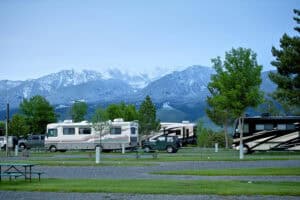For two years running, ballot initiatives approved by the Falcon School District 49 (D-49) Board of Education were voted down by the narrowest of margins. Of course, this is yesterday’s news for many; however, the unresolved issue of how to address double-digit growth in the district remains. But before our citizens and community can hope to address and resolve the rapid growth issue, confusion surrounding the funding of public education must first be addressed and clarified. The state of Colorado defines funding for public education as “Total Program Funding = Local Share + State Share”. The state, through the Colorado Department of Education(CDE) Web site has available a document that provides a general overview of how public education is actually funded. This 14-page document, “Understanding Colorado School Finance and Categorical Funding Program,” is available as a PDF download at http://www.cde.state.co.us/cdefinance/download/pdf/FY2004-05Brochure.pdf.Simply stated, taxes fund public education. Even after personally reading up on this issue, I too find it difficult to expand upon. It is fair to say some in our community mistakenly believe that most if not all money for public education is generated from local (personal and commercial) property taxes. However, this is not the case. Revenues that fund public education are not generated by a single tax, but by a number of taxes from sources – local and state – along with an additional level of funding as mandated by Amendment 23. This additional level of funding for public education comes from taxes already collected at the state level. Amendment 23 did not authorize an additional tax increase; it only authorized a greater share of funding for public education from existing tax revenues. Additional information regarding Amendment 23 can be found at http://www.colorado100.com/ufiles/Amendment23Overview.pdf.At the local level, two sources contribute approximately 30 percent to the district’s base level funding as defined by the state. Of the two, local property taxes account for the greatest share. Residential and commercial property taxes contribute approximately 27 percent to what the state defines as base level funding for the district. Collectively, business property taxes contribute approximately 14.85 percent of the 27 percent total with residential property taxes collectively contributing the remaining 12.15 percent.Other literature states the relationship between business and residential shares of the property taxes as 55 percent and 45 percent respectively. However, these percentage values by themselves can be misleading if not taken in context to the overall share that property taxes contribute to total program funding for public education in D-49. An excellent example of this can be found at http://www.colorado100.com/ufiles/GallagherOverview.pdf.So if local property taxes fund 27 percent of the overall base level funding for D-49, where does the remaining local funding come from? The remaining 3 percent comes from specific ownership (vehicle) registration fees. As you can see, local share falls significantly short of what the state of Colorado defines as the “Total Program” costs.At the state level, four sources contribute to funding public education. These sources are personal and corporate income taxes along with sales and use taxes. Because local share does not fully fund the district’s total program costs, the state is required to fund what local share does not. For the D-49 community, the state share of the total program cost is approximately 70 percent.Specifics as to how the state draws from these four funding sources were not immediately available at the writing of this article. There are other funding variables that come into play as it relates to funding public education, but these other sources generally address needs and programs that fall outside of what state base level funding was formulated to address. Additional information regarding these other funded programs can be found on the CDE Web site at http://www.cde.state.co.us.A remaining factor that is an integral part of how the state goes about fulfilling its state share of the total program funding is TABOR. This amendment to the state constitution in 1992, coupled with the Gallagher Amendment passed in the early 1980s and Amendment 23 passed in 2000 is not only pitting Republicans against Democrats and the governor against legislators, but also pitting other state programs and services against public education. Additional information on how TABOR affects the funding process can be found at http://www.colorado100.com/ufiles/TABOROverview.pdf.Looking back, perhaps I should have simply stopped at “taxes fund public education.”Alfred Green






